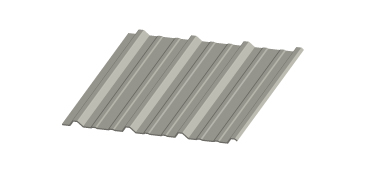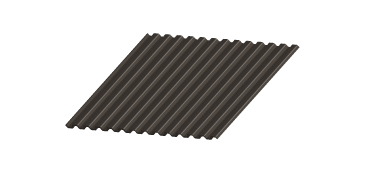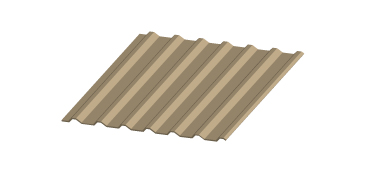Leading Change Together
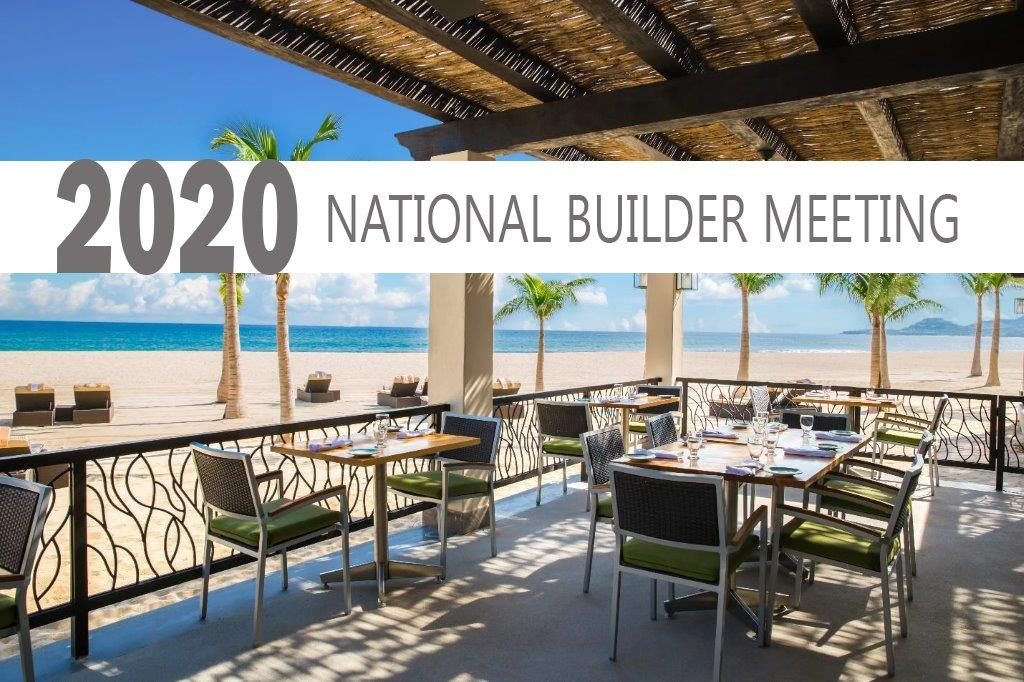
Los Cabos, Mexico was the perfect location for our builders and vendors to come together and learn about Robertson’s plans for the upcoming year and celebrate the successes and milestones that were achieved together. From February 27 through March 1, Robertson hosted over 115 people for the meeting, themed Leading Change Together.
This year was no exception with an incredible line-up of speakers and activities for attendees to enjoy.
The honorary guest speaker was Vince Poscente. As a Canadian Olympic Champion Speed Skier, Mr. Poscente provided incredible insights about how to be more resilient and how to overcome obstacles. As a top ten motivational speaker in North America, he knows first-hand how innovation, persistence and fearlessness play into future success. Some key takeaways from his session included that the world is built on instant gratification – be an architect for the truth. He also provided an interesting take on interruptions and how to get back on track to stay focused and get the project finished. And ultimately, we need to be proud of our journeys – it will be the greatest experience of our lives.
Centria presented on its expanded offering through Robertson that included product explanations for high-end architectural panels and insulated metal panels. The company elaborated on product usage and information, along with dealership opportunities and plans, and then approval process information and training for 2020.
Wes Young, Cornerstone Building Brands Product Training Manager, presented on the Do’s and Don’ts of IMPs with product explanations and training, providing common issues that arise with IMPs during construction and points to consider when utilizing these panels.
Guest speaker Scorpio Can provided growth facility industry information, including key factors involved with entering the market for end customers, investors and builders. Scorpio also announced a two-day full training option in Chicago – a time for the training is still to be determined, but information will be provided in the near future.
Robertson introduced the company process flow and how changes can affect this process. Robertson also provided insights into the benefits of the builder partnerships and provided ways in which to support each other and partners throughout the process flow.
Outside of business sessions, attendees had opportunities for some fun in the sun! Many got to enjoy golfing at one of Los Cabos’ most beautiful courses, Puerto Los Cabos. Others enjoyed fishing expeditions, whale watching and beach time. Attendees were also treated to a Welcome Party to kick-off the meeting and a Beach Party with dinner and dancing. The beautiful location and resort provided many activities and fun for everyone.
Builders were recognized for their hard work, achievements and successes throughout 2019 at the Robertson Builder Awards Gala. Awards were given for the very best builders who demonstrated excellence in their business with Powerhouse Management Group Inc winning “Builder of the Year Award”, “Steel Building Canada Inc winning the “National Builder Award” and Kodiak Steel Buildings winning the “2019 Inukshuk Award”. Our very own John Gelms walked away with the “2019 District Manager of the Year” Award Congratulations to all the winners!
Vendors in attendance for this year’s meeting included:
- S-5!
- DBCI
- Sherwin Williams
- Metl-Span / Centria
- Silvercote
- Global Building Products
- Dynamic Fasteners
- Curber Manufacturing
Robertson has been proudly holding builder meetings since the 1980’s and has continuously strived to provide meaningful information to their builders each year to help them learn, grow and succeed. These meetings provide Robertson an opportunity to outline plans for the upcoming year, as well as take a look back to celebrate all the wins and review the take-aways for improvements to move forward into the future.
Builders who attend these meetings can expect to learn about industry information and updates, CSSBI updates, Robertson Building Systems company and builder plans, goals and commitments, product training, and networking opportunities. Relationships are created during these meetings that strengthen the bond between Robertson and the builders – it is a great opportunity to grow together into the new year.
Thank you for attending and helping to make this a great event!
Why are Metal Agricultural Buildings So Popular?
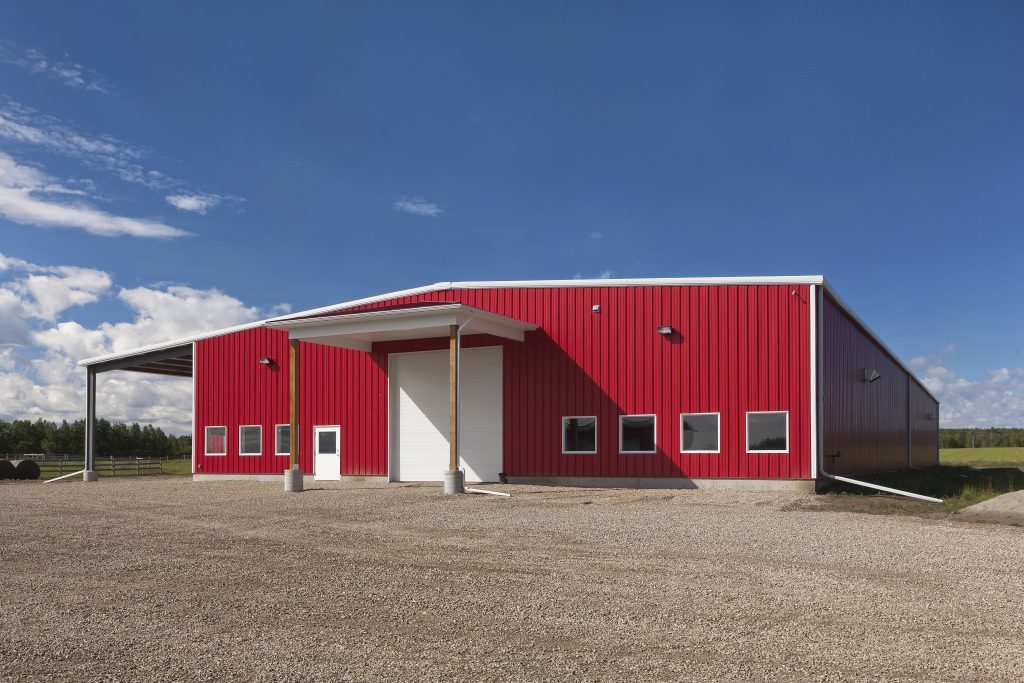
As anyone in the agricultural industry can tell you, a working farm or ranch is a serious business and you need a building that can meet this challenge. While agricultural buildings (including barns, stables, riding arenas, feedlots, equipment and storage barns, and so on) have traditionally been constructed with wood, metal has been the material choice for over 60 years now, and this popularity can be attributed to four main aspects:
- Durability
- Cost efficiency
- Interior details
- Ease of expansion
Durability
The day-to-day conditions of life on a farm are extreme, and a metal building is capable of easily handling these conditions. High-strength steel withstand inclement weather, such as hail, wind, and snow, providing protection for your equipment and animals. Furthermore, metal buildings are virtually kick-proof, meaning that your building won’t be damaged by animal kicks to the wall, which have been known to compromise the integrity of a building.
Unlike wood, metal does not support the growth of mold or decay. It is additionally resistant to fire, which provides more peace of mind when it comes to protecting your livestock and equipment.
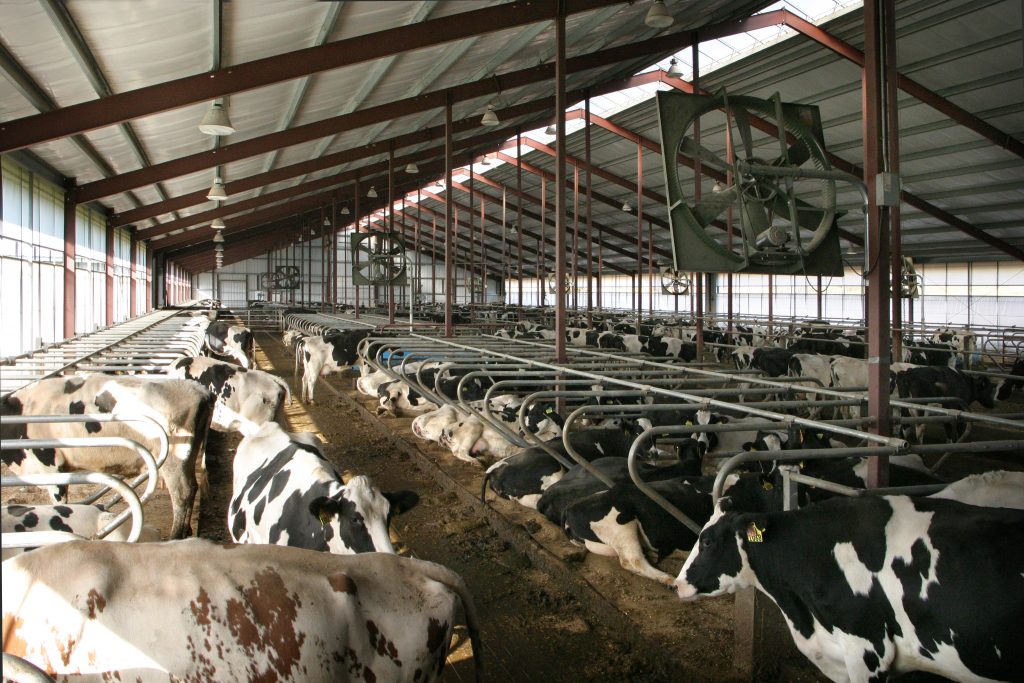
Cost efficiency
An investment in a metal building is extremely cost-effective and will save you money in the initial costs associated with installation and labour. Every building owner considers facility maintenance costs and lifespan for the long-run, and this is where metal has yet another advantage over wood. Virtually maintenance-free, metal walls and sloped metal roofing are self-cleaning and require little upkeep, leading to low operating costs for the lifetime of the building.
Interior details
Metal buildings can be designed to meet your exact requirements and local buildings codes. Column-free interiors can provide uninterrupted floor space that can include cubicles or stalls with brisket board and neck rails. High ceilings help promote proper ventilation while lofts can be added for additional storage space, increasing the functionality of your facility.
In addition to stellar performance you can expect from your facility, metal components also offer aesthetics and timeless finishes. As mentioned, while metal panels require almost no maintenance, they are easy to clean when needed. Cupolas and dormers can also be detailed in to open up the facility to natural light and create a stylish design.
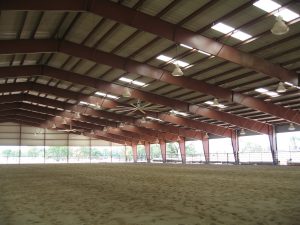
Ease of expansion
Metal building solutions offer the ability to expand and add on in an easy and attractive way. This design flexibility and limitless scalability allows for changes and the ability to accommodate any unexpected expansion of your agricultural operations. Increasing the length of an engineered building system is easily done by removing an end wall, adding additional frames, wall, and roof panels, and finally reattaching the wall.
It comes as no surprise that more and more people are opting to use metal for the agricultural facilities. The durability, cost-efficiency, details, and ability to easily expand allows metal buildings to stand the test of time. And that fact has people in the agricultural industry keeping an eye out.
Oil Canning in Single Skin and Insulated Metal Panels: Definition, Causes, and Prevention
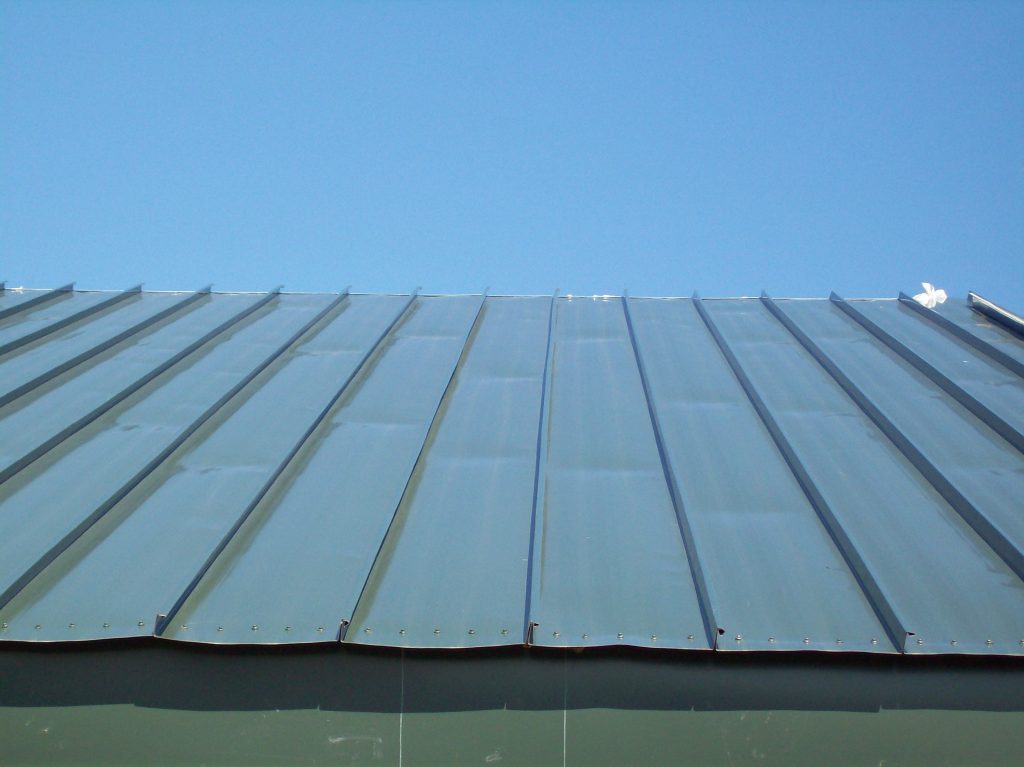
Oil canning, by definition, is the visible distortion and waviness that occurs with metal roof and wall panel systems. Also known as elastic buckling or stress wrinkling, oil canning doesn’t discriminate. It occurs in all metal material used in construction, including steel, zinc, copper, and aluminum. And while it doesn’t affect the integrity or performance of the material, it does detract from an otherwise sharp looking building.
Oil canning is caused by a lot of factors, like stresses during production, where the complex manufacturing process that creates panels includes many phases that take place on a continuous production line. Additionally, the skills and experience of your contractor can determine how much oil canning you will experience. When installing the panels, factors that can affect oil canning include incorrect fastener installation, improper handing and storage, panel misalignment, and not allotting enough space for thermal movement. That said, while it’s necessary to hire an experienced contractor, you can never completely disregard human error.
So considering both nature and man are trying to turn your perfectly good metal building into wavy gravy, a good building comes armed with a solution to your problem. This article aims to explain how we can lessen the negative aesthetic effects of oil canning.
Oil Canning in Single Skin Metal Panels
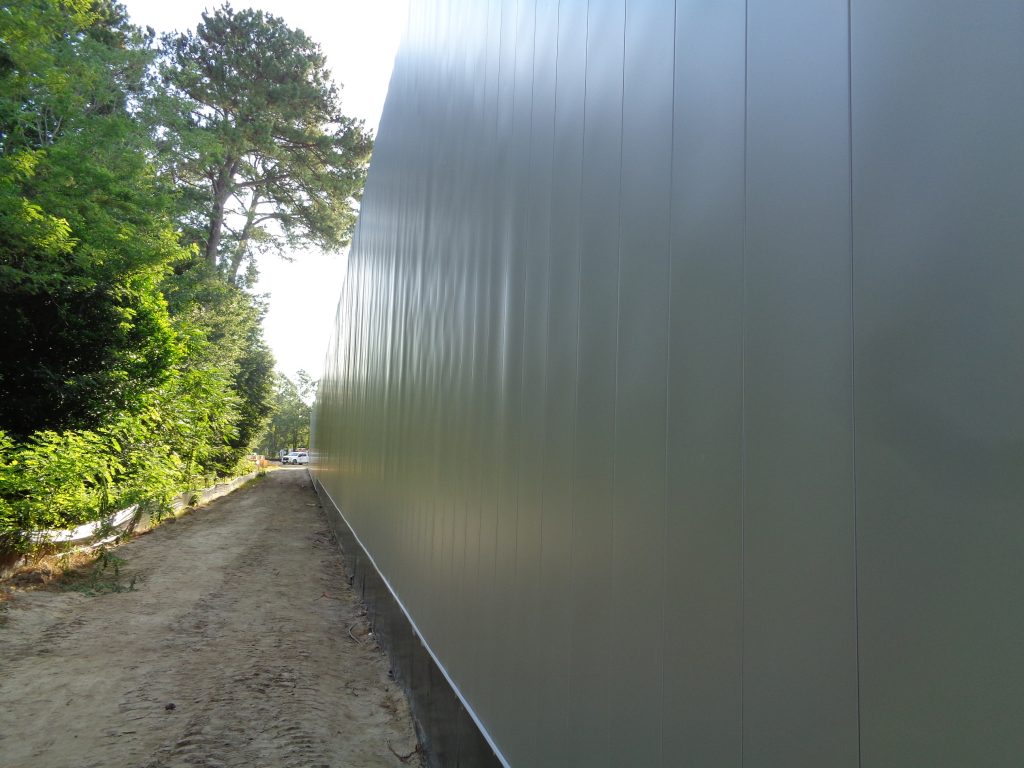
Oil canning is inherent in metal and (to some degree) happens to all wall and roof systems. The good news is that you can take preventative measures to prevent oil canning in the planning stages of your project.
First, oil canning is lessened when the metal is of a thicker gauge. If oil canning is a concern, it would be best to avoid 26- or 29-gauge products and opt for a heavier-weight 24-gauge (or less) material instead.
Second, the color of your panel can promote oil canning. And although all single skin panels have the same chance of developing oil canning, darker shades and glossier finishes tend to highlight waves and ripples in the panels the most. A lighter color in a low-gloss finish is an obvious choice to prevent this.
Last, the type of panel you choose can decide whether your building will be more or less prone to oil canning. The manufactured rib rollers (that is, those indentations or patterns that are roll-formed into the flat portion of metal panels) between the seams break up the amount of flat surface on a panel and can lessen the effects of oil canning less prominent. The most common rib rollers that minimize the look of oil canning on metal roofing and wall systems include ribs (V-ribs, bead ribs, pencil ribs), striations, and corrugations.
| Manufactured rib rollers such as ribs, striations, and corrugations lessen the effects of oil canning in single skin metal panels |
Oil Canning in Insulated Metal Panels
The best and simplest solution to control oil canning in insulated metal panels (IMPs) is to use embossed steel. Embossed or textured finishes disperse light that hits the surface of the panel, eliminating this phenomenon and making it difficult to see oil canning and any other imperfections in the steel.
| Embossed versus Unembossed (smooth skin) IMPs |
Moreover, the way IMPs react to thermal stress can actually induce oil canning. Unlike single skin panels, IMPs do not expand or contract; they actually bow outward. Depending on the attachment spacing, framing design, and orientation of the panel, oil canning may occur. And regarding building movement, keep in mind that all buildings move from wind and live loads. The normal deflection of the building will be felt in the framing—where IMP is attached. If you add in framing alignment tolerances, over driven fasteners, and even handling—all these factors may induce oil canning.
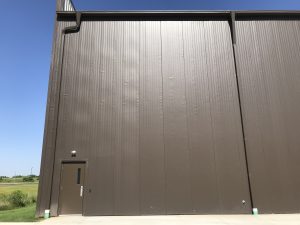
Is There a Way to Eliminate it Completely?
The short answer to this is no. Overall, remember science is sometimes working against you and there is no way to eliminate it entirely. So instead of trying to beat it, join it. The tips we’ve outlined in this article can dramatically reduce the effects of oil canning and help give you the stunning finished product you envisioned.
Tekla® Structures (BIM Modelling) Revolutionizes the Project Process
Worth a thousand words: software allows accurate 3D renderings
It’s no surprise to hear that metal buildings are not the boxy, straightforward, and simplistic designs of the past. Architects, engineers, and construction companies have been collaborating with clients over the past decade to create some of the most innovative, forward-thinking metal building designs the industry has ever seen.
It is a surprise, however, when a software system can take the complex metal building design, provide alternative design schemes to establish the best solution, implement a cost-effective change management system, speed up the overall design times, and establish seamless 24/7 Building Information Modelling (BIM) collaboration between all contractors on the job…essentially making easy work of just about everything that used to make jobs, well, complicated.
What is Tekla® Structures?
Tekla® Structures (BIM Software) is revolutionizing the process as well as the possibilities–and Robertson Building Systems is utilizing its advantages to offer customers the unique, custom buildings they want with greater simplicity and affordability than ever.
Matt Carter, Drafting Squad Leader at Robertson, described the advantages that software offers the company: “Tekla® has allowed us to integrate with our normal workflow and expand our capabilities for production, giving us more capacity for design complexity.”

Matt Carter, Drafter IV
The program produces a 3D model, ensuring that what the customer sees is exactly what they get. “One of the advtanges of Tekla®,” explained Matt, “is that when we’re at the final point of releasing our job to fabrication, everything is 100% accurate in our model.” This part of the process is invaluable in saving time, money, and frustration for everyone.
“It gives customers a resource to go to their sub-contractors and make sure there are no conflicts between the desired outcome and what is being submitted for production.”
Once a design is approved by the customer, the model can be shared with all of the other sub-contractors on the project so that everyone involved is informed and aware of every aspect of the project. “With everyone using the BIM, the general contractor can pull the models together from every sub-contractor and see the entire project in full,” said Matt.
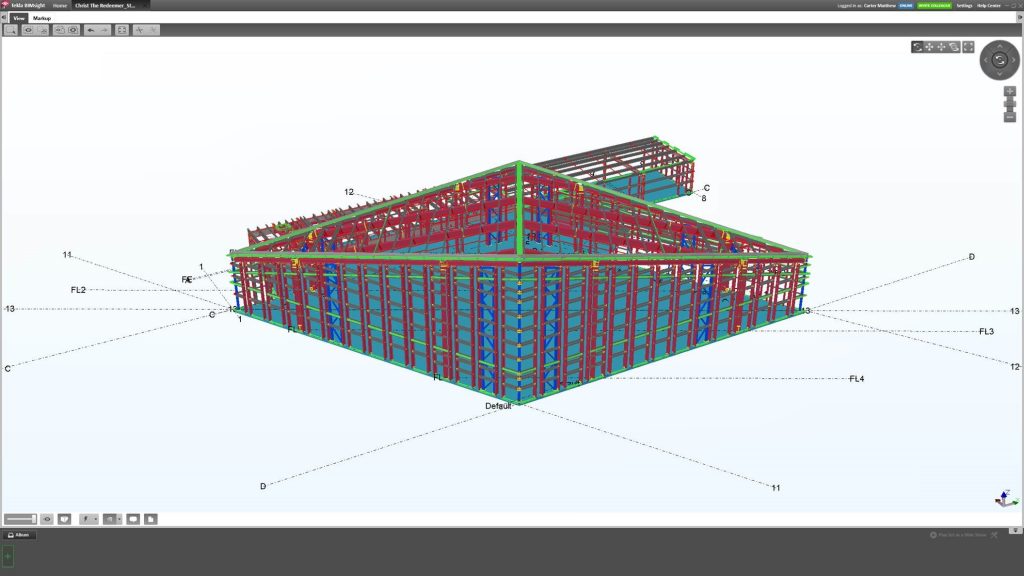
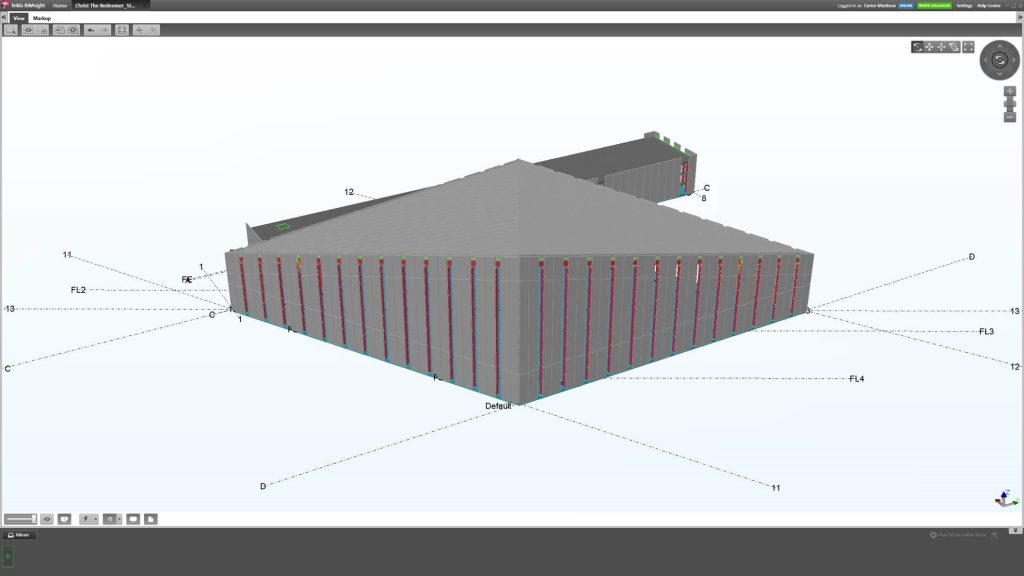
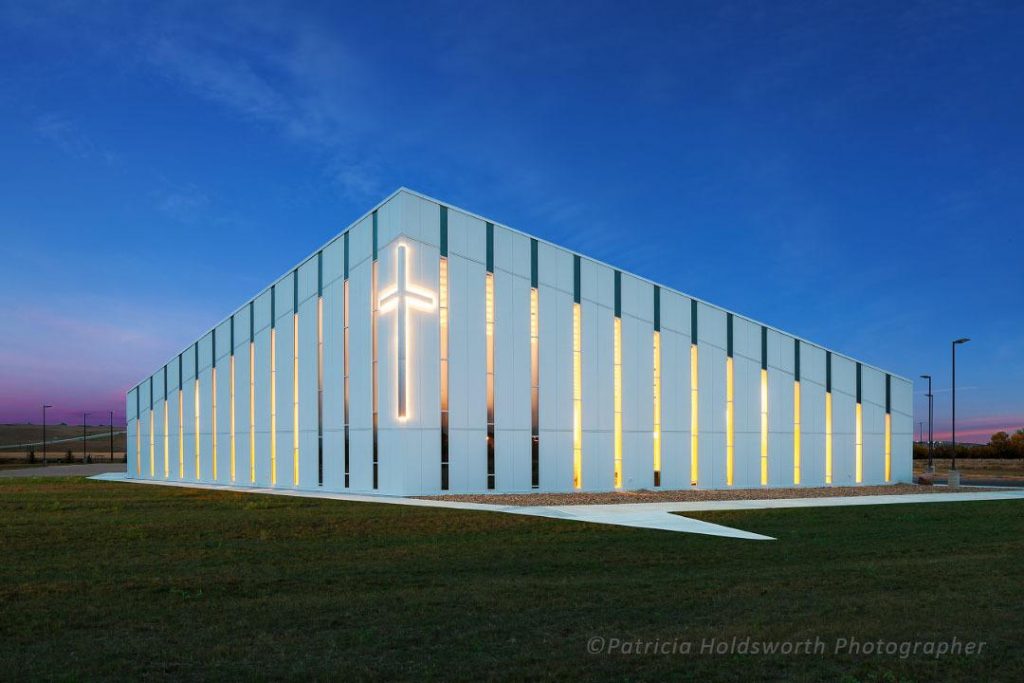
Tekla®-generated BIM models and the final building project by Robertson, Christ the Redeemer Church in Swift Current, SK
Robertson does not use Tekla® exclusively, as some projects are best served through other software systems. According to Matt, the more complex projects are where Tekla®’s features really shine: “We assess every project and if there’s just too much going on or the design is too complex to work with our normal software, we’ll switch to Tekla® to make sure we get everything correct.”
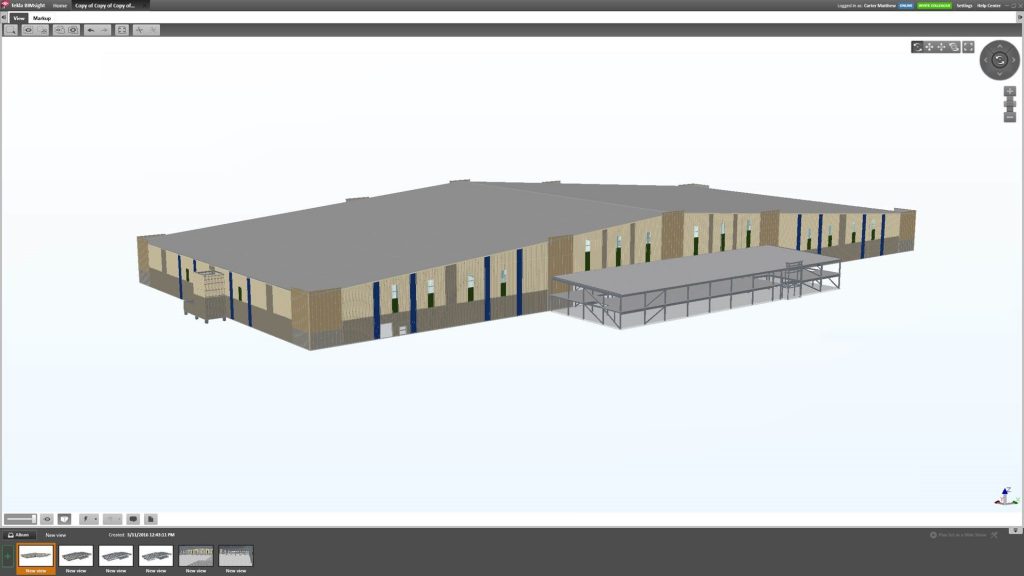
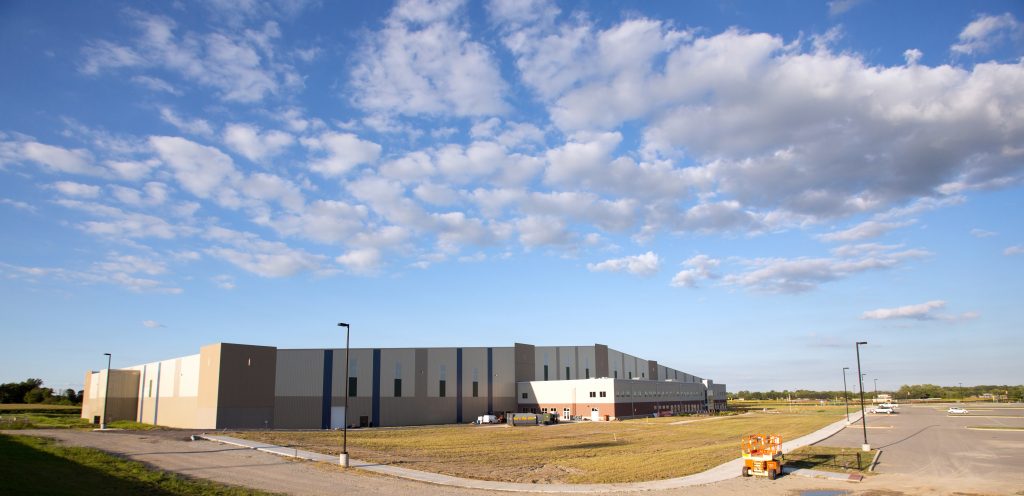
Tekla®-generated BIM model and the final building project by Robertson, Grand Park Sports Campus in Westfield, IN
Overall, the project is simplified at every phase, with a single set of data throughout the process. And as we all know…greater team communication and collaboration nearly always result in greater customer satisfaction.
2019 Robertson Builder Meeting Recap | Focused on YOU!
Sometimes mixing work with play is necessary. That was the case when we celebrated our Robertson Builders in Jamaica last month.
From February 14th to the 19th, we traveled to Montego Bay, Jamaica to play host to Builders and their families at Hilton Rose Hall Resort & Spa, the most attractive, family-friendly, all-inclusive resort in Jamaica.
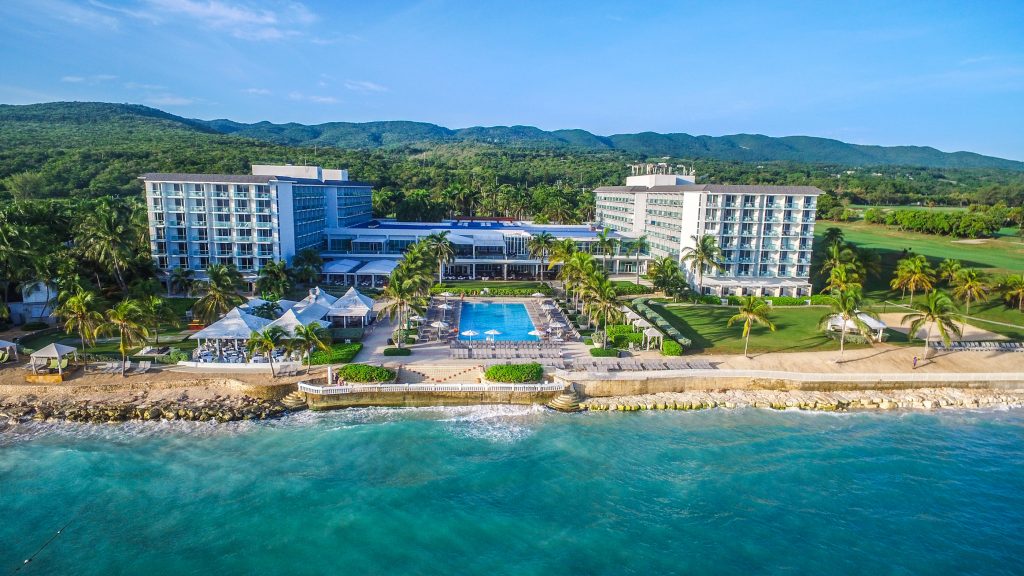
If you’re thinking you missed out on an amazing time (which you did) or if you just want to relive it all, you can check out all the pictures on the Builder Login area of our website (you’ll need your Robertson Builder username, password, and customer number to view them).
Despite all the fun-in-the-sun and the tropical backdrop we enjoyed during our time at Jamaica, including events like the lively welcome reception and an unforgettable Jamaican Beach Party with live music and dancing, we never lost sight that we were at a business meeting.
Business Sessions
Bright and early on the first day of our business session, Vice President of Robertson, Bob Patterson, set the tone of the meeting by formally welcoming our Builders and guests, providing an informative business and economic update, as well as outlining the direction of Robertson’s future. He also introduced the theme of the meeting, “Focused on YOU!” The message was simple: Robertson’s future is focused towards getting closer and strengthening our partnerships with each and every builder we have.
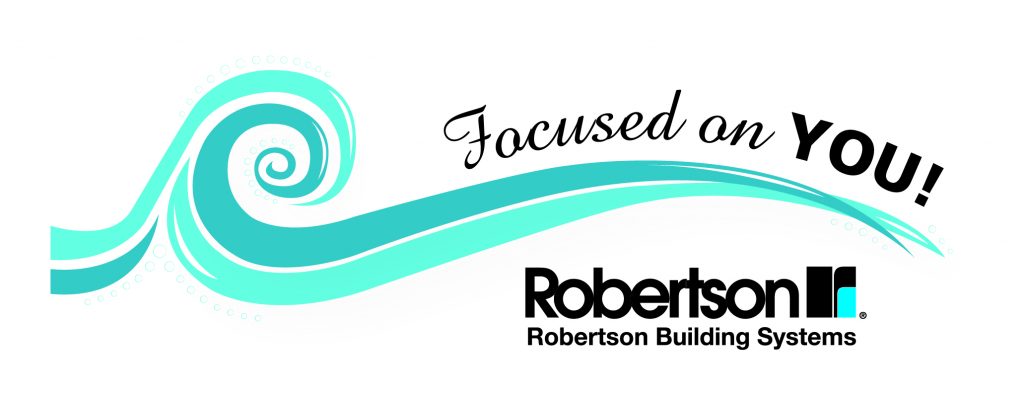
Our Regional Sales Manager, James Austin, then provided an Update on Sales, Marketing, and Business Development. Next, NCI Vice President of Manufacturing, Barry Ivy, discussed the development and innovations that Manufacturing will implement, which will undoubtedly create a smoother process from start to finish.
We were also privileged to present a project spotlight on Marcovecchio Construction Ltd. and their impressive Sellick project. The video can be viewed on our website. (Keep an eye out for a cameo from a familiar face!)
On the second day of our business session, we were pleased to introduce Kevin Davis from Topline Leadership, who delivered an informative presentation on customized sales training for the metal building industry and Robertson Builders. The general feedback from everyone was that this training was much needed and relevant to our business, as we delve into new market segments and industries for metal buildings.
Breakout Session
Following the sales training, Bob began the breakout session by providing further insight into market research surrounding our new value proposition and what it means to be supporting our Builders in an “Expert Marketplace.”
In essence, our customers in the Expert Seeker segment rely on us for our reputation, knowledge, expertise, and capabilities in the metal building industry, where we are in a unique position to provide them with many different integrated product solutions and we are able to provide the best solution for each of our builder’s projects. Our leading-edge design tools and technology enable us to get things done, from planning to build and beyond.
The breakout session was one of our most successful elements of the 2019 Builders Meeting. The Builders were provided with seven common challenges in their marketplaces and were given the opportunity to tackle these issues as a group and bring them back to Bob for review. His summary generated compelling roundtable discussions amongst the Builders, which answered questions about their personal views and thoughts on our new “Exper Seeker” value proposition. Concurrently, Bob held “fireside chats” with representatives from each table to better understand the needs of the marketplace, clarifying definitions, and answering their specific questions.
The information shared as well as the solution provided strengthened our Robertson and Builder Network partnership and gave us clear goals to accomplish in 2019.
The business portions of our meeting concluded with Bob and James and the Robertson tradition “$20 for Orders” practice where Builders are invited to submit orders to us—whether they be written on a paper printout or scribbled on a cocktail napkin—in exchange for a $20 bill. The excitement from the group resulted in a flurry of new business that promises a busy year ahead.
If you are interested in obtaining any of the material presented, send us an email and we’ll get that right over to you.
Robertson Builder Awards Gala
The Robertson Builder Awards Gala took place on Friday evening, where Builders were recognized for their hard work, achievements, and successes throughout 2018.
Awards recognized each of the Top Builders by District, Outstanding Builder, Million Dollar Awards, President’s Club Cumulative (where we introduced two new members), and the highly coveted Top Builder of the Year. These awards are distinctions reserved only for the very best Builders that demonstrated excellence in their business.
While Outstanding Builder Awards and Million Dollar Awards recognize Builders who have generated $500,000 and at least $1 Million dollars in sales in a single calendar year alone, the Top Builders by District are ranked #1 in their respective territories, while Builder of the Year outranks even this prestigious distinction.
For 2018, Robertson was proud to recognize Powerhouse Management Group LLC from Langley, BC as the Builder on the Year.
For a full list of the award winners, click on the thumbnail below:
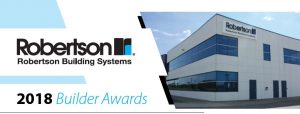
We are honoured to have hosted this event and want to thank those who attended, where we had an opportunity to celebrate our Builders and give you the well-deserved recognition you deserve. We extend a special thanks to our Vendor Partners who joined us in Jamaica; their generous sponsorship helped make the meeting a success.
We are committed to the success of our Robertson Builders in 2019 and look forward to seeing you at the next Robertson Builder Meeting.
Thanks for a great event!
Protect Your Metal Roof Against Excessive Snowfall
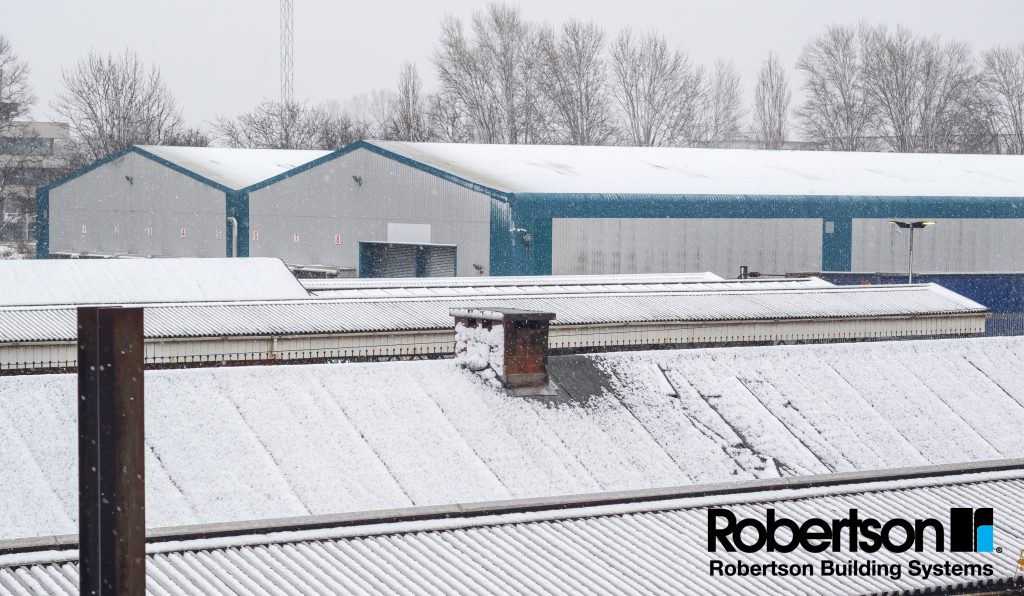
When winter comes, weight comes. We’re not referring to your waistline (although that happens too). We’re talking about the weight on your metal roof from excessive snowfall.
Structures are individually designed to bear specific loads. As the winter turns blustery and wet, an excessive snowfall could increase the load on your roof and create an overload condition, which could create serious damage to your building. The Ontario Ministry of Labour (MoL) highly recommends consulting with a structural engineer and initiating snow removal during these excessive snowfalls or when a roof shows signs of distress.
Here are a few safety precautions to remember when clearing away snow accumulation:
- Remove snow in a balanced manner as much as possible
- Give extra care around roof panels, and mechanicals, and/or fasteners to prevent damage
- Never use metal tools or snow blowers in the removal
- When possible, use draglines and other means to remove snow and keep personnel off the roof
- If the building has a skylight/light transmitting panel (LTP), be aware of their location since the snow may conceal them; do not step directly on skylights/LTPs or in the areas adjacent
For more information on snow removal, you can consult our Metal Building Maintenance Manual. If you have questions about your specific structure, get in touch with us. We’re here to answer any questions you have as you prepare for the coming winter season and excessive snowfall.
How Metal Buildings Can Help Your Cannabis Business Grow

When cannabis became legal in Canada in October 2018, government authorized retailers of recreational cannabis have consistently been out of stock due to lack of supply. If you’re thinking of starting a cannabis growth facility, read on for reasons why a metal building is the best choice:
Durability
Metal buildings are innately able to handle the consistent intense humidity that is required in the cultivation process. High-strength steel is also able to withstand the rigors of other extreme weather, including wind, rain, and snow. Furthermore, it does not support the growth of mold and is resistant to rust and decay, assuring owners that their metal building will stand the test of time.
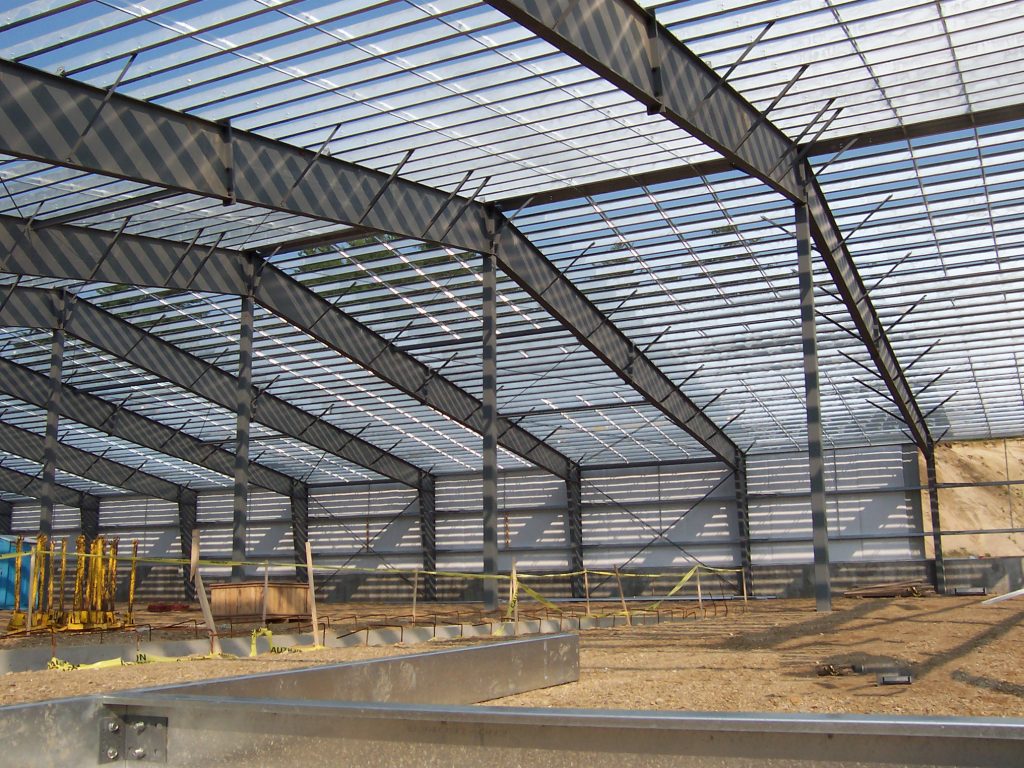
A metal building is an excellent choice for a cannabis growth facility
Large clear span space
As cannabis requires a long time to mature and doesn’t allow for much rotation of crops, ample space is required for more growth. Metal buildings can support column-free interiors of large, unobstructed, clear span space to support crops, water storage, processing facilities, product storage, and office space. Cannabis growth also relies heavily on intelligent lighting that simulates natural sunlight, and the essential load specifications can be easily detailed to accommodate these requirements.
Quick construction time
The components of a custom designed metal building are made to order and arrive to site pre-punched, drilled, and ready for assembly. This pre-planning results in fewer job delays and quicker construction time, which yields a significant erection reduction of approximately 33% compared to other methods of construction. Along with shortened erection time comes decreased costly labour hours as well as a fast completion date, allowing the owner to move in, commence operations, and ultimately turn a profit sooner.
Cost efficiency
An investment in a metal building is extremely cost effective and, as mentioned, will save you money in the initial costs associated with installation and labour. Every building owner considers facility maintenance costs and lifespan for the long-run, and this is where metal buildings have yet another advantage over conventional methods of construction. Metal buildings are virtually maintenance free; metal walls and sloped metal roofing are self-cleaning and require little upkeep, leading to low operating costs.
The components of metal buildings are also perfect for cannabis growth facilities. Both single skin panels and insulated metal panels (IMPs) are ideal for weathertightness and innately resist mold, rust, and fire. Further to this, IMPs are composed of an advanced mineral wool core between the panel faces which provides buildings with increased insulation that significantly reduces heating and cooling costs.
Easy expansion of your building
Metal building solutions offer design flexibility and limitless scalability, which allows for changes and the ability to accommodate any unexpected expansion of your business. Increasing the length of an engineered building system is easily done by removing an end wall, adding additional frames, wall, and roof panels, and finally reattaching the wall.
So if you are planning on designing and building your growth facility, a custom engineered metal building is the perfect solution that will meet your needs and budget in a quick and affordable way.
—
Robertson provides metal buildings for a wide variety of end uses in multiple industries. Check out our project gallery to see photos of the some of the metal buildings we have helped make a reality.
2019 Transportation Industry Update
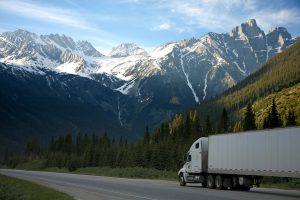
In 2018, with a shortage of truck drivers and skyrocketing costs, all industries across North America—including the metal building industry—felt the heat of the seemingly out-of-control transportation industry. Sectors that rely on freight fell prey to the over 25 percent price increases in Q3 and their earnings took an inevitable hit. And, though the transportation industry calmed somewhat in Q4, prices were still higher than what we’ve ever seen in the past.
The logical question on everyone’s mind is: “Will rates continue to rise in 2019?”
The short answer to this is “Yes.” In fact, along with prices, the driver shortage is anticipated to remain at the record levels we saw in 2018.
But it’s not all doom-and-gloom. According to a Freight Industry Update by Agforce in late November 2018, despite the prediction that rates will rise, the year-over-year percentage of increase should be below 2018 levels.
So while this news is not exactly what we want to hear, it’s not completely negative either. Keep in mind that the current state of a bustling transportation industry points to a strong economy, and that is indisputably positive. Furthermore, the transportation industry is taking significant steps to stabilize itself. As of late 2018, carriers have made it a priority to hire more drivers to accommodate the pains felt from the general lack of trucking capacity. In addition to this, a decrease in the volume of freight tendered is a real possibility, and this may loosen capacity up a bit.
Stay tuned for more transportation updates from Robertson Building Systems.
Ordered the Wrong Fastener? Here’s How to Prevent This Mistake.
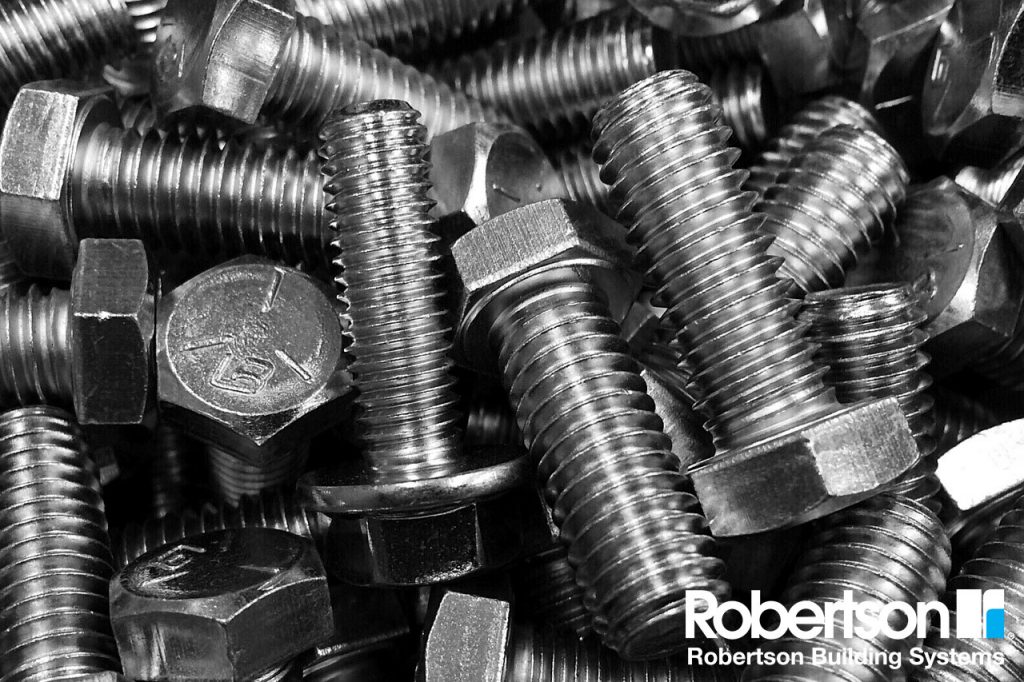
Ordering the wrong fastener should always be prevented because each fastener has been developed for a specific use and is not interchangeable. This means that not knowing the difference between a stainless shank and a stainless cap or the difference between a long life or extended life fastener could mean you are ordering the wrong one for the job, which can result in job delays or even stoppages. If you don’t know the difference, provide details about the specific usage for the fasteners and never hesitate to ask lots of questions when you are ordering.
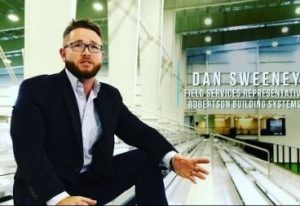
Guest Blogger: Dan Sweeney, Field Services Supervisor at Robertson Building Systems
Here’s Why It’s So Important
As mentioned, there are different fasteners for different applications and more options for those applications. The added options provide a better fit for your project so it’s important to educate yourself on the subject. Often, you may not realize you have the wrong fastener until the middle of the building erection, when it’s time to use them.
When you order, simply being aware that each fastener has a specific and varied use will help you to order correctly. Make sure you ask questions in order to get the fastener that is suited for your building project.
There’s our quick fix! Do you have any questions? Want more details? Feel free to send me an email. And stay tuned for more quick fixes to keep your job on schedule, on budget, and on the move.
Transportation Sector Squeeze: Effects on the Metal Building Industry
Industries across North America are feeling the heat of rising transportation costs, and the metal building industry is no exception. Thanks to strong economic growth, freight volumes are ever increasing as more trucks are needed to haul shipments and deliveries across the U.S. and Canada.
And although the freight market is continuing to rise, recruiting new truck drivers to meet the demand is proving to be difficult for a number of reasons, most notably that the workforce is aging out of the industry.
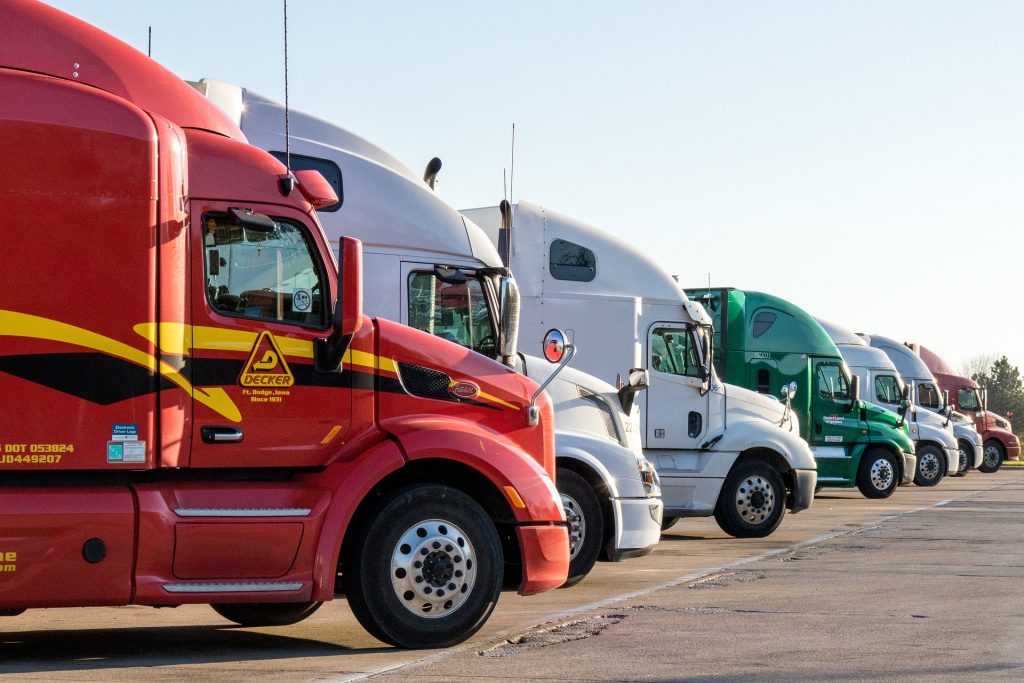
Other factors contributing to the state of the industry
An
article in the Wall Street Journal pointed out that the average age of a driver was 49 in 2014 compared to the 2002 age of 42. Another obstacle for potential new drivers is the age limit required to receive a commercial trucking license. Drivers must be 21 years of age and many young individuals are not willing to wait to reach the requirement, opting to work in construction or manufacturing, which ultimately can offer more time at home and, in some cases, better pay.
The increased demand for shipping, paired with a shortage of drivers is contributing to the financial impact felt not just in the metal building industry, but across North America, due to these escalating transportation costs. Higher shipping costs are starting to influence the price of material goods, from steel to cereals to produce and beyond. According to the Washington Post, the trucking industry is experiencing a perfect storm: the rising economy is creating a heavy demand for trucks, but drivers are hard to find with employment so low. The Wall Street Journal suggests that there are around 1.67 million commercial truck drivers in the U.S. – with between 400,000 and 500,000 of those being long-haul truckers – the toughest position to recruit and retain. Many trucking companies have raised their salaries and started offering bonuses, in an effort to keep and recruit new drivers. According to data provided by the American Trucking Associations (ATA), the median salary for a truckload driver working a national, irregular route was over $53,000 USD and a private fleet driver’s salary has increased to $86,000 USD. But these efforts to make the positions more attractive haven’t made much of an impact, and could be attributed to the lifestyle of a long-haul trucker.
Drivers can spend up to 11 hours a day on the road, ultimately sleeping and eating in their trucks as they cover the miles. The life of a trucker can be lonely, with 78% indicating they drive alone, according to a national survey provided by the Federal Motor Carrier Safety Administration. Drivers are away from home, family, and friends on a regular basis, and the position is no longer romanticized like it was in the 1960s and 1970s through music and movies.
What do rising transportation costs mean for the Metal Building Industry?
Due to these existing factors and other market influences affecting the cost of consumer goods, customers for metal buildings can expect to see an increase in pricing. However, an investment in a metal building will hold its value, despite a higher cost. To save on costs customers can also look at combining orders where possible and working with manufacturers early on in the process to receive accurate transportation quotes for each project.
If you have questions or concerns about your transportation costs, contact your Robertson District Manager for more information.


